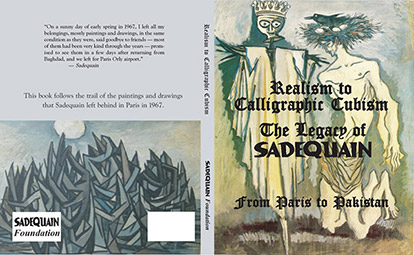Realism to Calligraphic Cubism – The Legacy of SADEQUAIN from Paris to Pakistan
 The decade of the 1960s represents the most explosive period of Sadequain’s artistic genius, when he defined new idioms and developed unique iconography while living in Paris, France. He invented new artistic forms, which, it can be argued, had not been explored before. Yet, this phase of Sadequain’s odyssey remains most elusive, because the majority of his work of this era remained locked in the attics and basements of Parisian galleries and homes.
The decade of the 1960s represents the most explosive period of Sadequain’s artistic genius, when he defined new idioms and developed unique iconography while living in Paris, France. He invented new artistic forms, which, it can be argued, had not been explored before. Yet, this phase of Sadequain’s odyssey remains most elusive, because the majority of his work of this era remained locked in the attics and basements of Parisian galleries and homes.
From the beginning of 2008 and lasting through 2010, there was a sudden burst of unprecedented activity in the sale of Sadequain’s artwork in France. All the sellers of the artwork were French nationals. This begs the obvious question: what prompted this sudden surge of activity more than 40 years after Sadequain left several hundred, or perhaps thousands of pieces of his artwork with his acquaintances in Paris for safe-keeping? Equally important, where did the artwork come from? What was its exact source? This is a serious matter of art history.
In December of 1960, Sadequain was invited to France by the French Committee of International Association of Plastic Arts. He was awarded a stipend for six months to live and work in France. In the absence of historical notes, it is assumed that the invitation from the French organization was under a cultural exchange program. Sadequain extended his initial visit of a few months to seven years of intermittent living and working in Paris, during which period he executed thousands of paintings and drawings.
This book is a chronological trail of Sadequain’s remarkable journey from Karachi, where, at early stages of his career, he diligently experimented with realist pen and ink portraits and landscape sketches and a decade later moved to Paris, where he invented and introduced his ground-breaking fresh forms of calligraphic cubism. These stunning calligraphic forms defined Sadequain’s future work and established him as a master in the same vein that Picasso is considered as the father of cubism or Monet is credited for initiating the impressionist movement.
